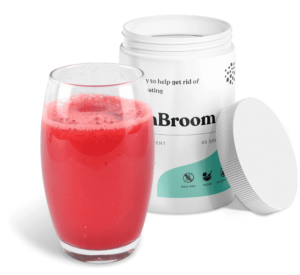Teeth Whitening is a common cosmetic dentistry procedure that helps to erase stains and boost confidence in teeth whitening. Teeth whitening choices are plentiful and range from expert procedures to at-home kits. We shall discuss the many kinds of teeth whitening, their mechanisms of action, and their safety in this blog. Let us delve deeper into the content.
Table of Contents
Various Teeth Whitening Methods:
Whitening Toothpaste:
These kinds of toothpaste have gentle abrasives in them that work to get rid of surface stains. They are the least-priced choice and are available at most pharmacies. However, they may take longer to notice effects and are less effective than other whitening options.
Whitening gels or strips:
These items are applied directly to the teeth and contain peroxide. They can produce noticeable improvements in a few days and are more effective than toothpaste. However, they can be challenging to apply and could lead to tooth discomfort.
Whitening Rinses:
These rinses are swished about the mouth for a few minutes and contain peroxide. They are simple to use and can deliver benefits in a couple of weeks. They could make teeth more sensitive and are less effective than other whitening alternatives.
Tray-Based Whiteners:
To use these products, you must put on a specially made tray that contains whitening gel. They can produce obvious improvements in a few days and are more effective than other at-home methods.
In-Office Whitening:
This method involves a dentist coating the teeth with a high-concentration peroxide gel and activating it with a specific light. It is the most successful choice and can deliver observable benefits in just one visit. It is, however, the most expensive choice and could result in tooth sensitivity.
How long does Teeth Whitening last?
The amount of time required for teeth whitening differs based on the type of procedure and the patient. The effects are typically transient and can only last a few weeks. The benefits of whitening strips or gels can last up to a year, but they can also wear off in as little as six months.
The results of whitening rinses may last up to a year, although they may wear off as soon as six months after use. Whiteners that use trays can last up to two to three years. The results of in-office whitening may last between one and three years.
It is crucial to remember that things like smoking, dark beverages like red wine, coffee, and tea, and staining foods like beetroot and berries can all affect how long tooth whitening lasts. Additionally, maintaining good oral hygiene and avoiding substances that may discolor teeth will assist the results of teeth whitening last longer.
Risks Associated with Teeth Whitening:
Most people think that teeth whitening is safe, but there are some risks and things to think about.
Too much use of teeth-whitening goods can make the enamel on your teeth sensitive. If the items aren’t used right, they can irritate the gums. Some people may feel brief pain or sensitivity in their teeth after getting their teeth whitened. Products that whiten teeth might only work for some, especially if your teeth are stained in a certain way. Pregnant or nursing women shouldn’t use teeth-whitening products because there hasn’t been enough study on whether or not they are safe during pregnancy.
Before using whitening products, people who have gum disease, tooth decay, or other oral problems should talk to a dentist.
Before you start any teeth-whitening treatment, you should ask a dentist to find out if it is safe for you and to talk about any possible risks or side effects.
Increased tooth sensitivity and moderate tissue irritation, mainly along the gum line, are the most frequent adverse effects of teeth whitening. These negative effects frequently go away within a few hours. It is crucial to adhere to any product directions and instructions from your qualified dental practitioner, just like with any medical operation.
When done under a dentist’s guidance, teeth whitening is generally regarded as safe. But excessive use of whitening agents can weaken tooth enamel and increase sensitivity. A dental practitioner should be consulted before beginning any teeth-whitening procedures.
Mobile Teeth Whitening:
With mobile teeth whitening, you can get your teeth whiter without having to go to the dentist.
There are many goods and services for mobile teeth whitening, from kits, you can use at home to professional-grade equipment. Mobile teeth whitening can be done at home, in a dentist’s office, or at a special event. Products and services for teeth whitening vary in how well they work and how safe they are, so it’s important to choose a reputable provider like Beaming White. Some mobile teeth whitening goods and services may cause tooth sensitivity or other side effects, so it’s important to follow the product’s instructions. Teeth whitening on the go might only work for some, especially if your teeth are stained in a certain way.
The Ideal Frequency of Professional Teeth Whitening:
Professional teeth whitening is a common way to improve the look of your teeth by getting rid of spots and discoloration.
Once a year, you should clean your teeth in a dentist’s office, and in between, you can do touch-ups at home.
Professional teeth whitening at the dentist’s office is suggested once a year to every 18 months, depending on how long the results last. Professional teeth cleaning can make your teeth whiter for up to three years. You can use at-home tools as often as once every four to six months. Your teeth whitening is done by a professional, usually within three to four weeks.
Conclusion:
Finally, deciding to whiten your teeth might help you get rid of stains and regain confidence. You can search for the best course of action for yourself by deciding on your preferred treatment approach, keeping your budget in mind, and taking other factors into account. Teeth whitening has the potential to be a secure and efficient method of achieving a more radiant, self-assured smile when used correctly and under a dentist’s supervision.








